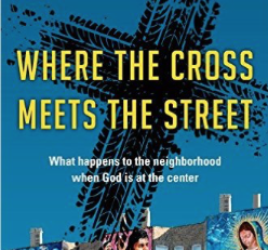Known for his prophetic writing in The Next Christendom, acclaimed historian Philip Jenkins proves that understanding the past is vital to knowing the present and foreseeing the future. In The Lost History of Christianity: The Thousand Year Golden Age of the Church in the Middle East, Africa, and Asia—and How It Died, Jenkins uncovers that which had been lost.[1] Jenkins tells a story almost forgotten, one of a Christianity centered in Syria and Iraq which had spread to the edges of the Far East. Throughout the book, Jenkins traces the history of the Asian Church from it’s roots in Antioch of Syria until it’s death at the end of the first millennia. So devastating was it’s destruction that little has been left to show and tell. Yet, the meager remains are woven into a tale that trumps any of our imaginations of a flourishing and influential Christian faith east of the Roman Empire.
“We can’t understand Christian history without Asia—or, indeed, Asian history without Christianity,” Jenkins states.[2] Having lived in Asia for 17 years now, it comes as a pleasant surprise to me to learn of Christianity’s early success across this vast continent. I knew that the Apostle Thomas had made it as far as India because of the remnant “Thomas Christians” still gathering today. Could it be possible that Thomas or his followers traveled as far as Indochina and Vietnam? Jenkins suspects as much.
In China, Nestorian and Jacobite Christians journeyed the Silk Road all to way to Beijing and Shanghai, possibly crossing the sea to Taiwan and Japan. Grave stones found across China are marked with the Nestorian’s remarkable logo of the cross atop a lotus flower. Though a minority, early Asian Christians lived peacefully with Muslim and Buddhist neighbors. They were influential particularly in academia, often translating historic texts from various languages and establishing educational centers. They are a source of inspiration for Christians today living in the same lands as minority people.
Yet, churches were effectively destroyed and the faith almost completely quenched several times during those centuries. I have been taught about church growth, multiplication methods, and church planting movements. Jenkins challenges me to also have a theology of the death of a church. Undeniably, the church had died in Asia after a thousand years of history with only “ghosts of a faith” left to wonder the land. “When religions fade and die, they leave behind them remnants that are incorporated into the newly dominant culture,” writes Jenkins.[3] Strangely enough, Islamic culture has preserved numerous traditions of early orthodox Christianity: strict Lent practices became Ramadan; Syrian churches were turned into mosques, which still resemble the old architecture; women covered their heads as the Apostle Paul instructed the Asian believers. What seems so foreign to us Western(ized) Christians is actually closer to ancient Church traditions than we would like to admit.
This book has inspired me to view the history of the Church in Asia through a two-thousand year lens, rather than the one-century perspective I have had until now. The peaceful coexistence and influential role of the early Asian Christians inspires me to share the story with my brothers and sisters in Hanoi, where we are a super-minority. It is hard to grapple with the theology of the death of a church, yet Christianity came close to extinction in Vietnam half a century ago. The church was certainly not prepared for that. “Losing the ancient church is one thing,” says Jenkins, “but losing their memory and experience so utterly is a disaster scarcely less damaging.”[4] We can restore the history by starting to recover its memories. As the Hanoi Church celebrates its 100-year anniversary in 2015, I hope to be of help in celebrating and honoring its memories.
By Jacob Bloemberg
[1] Philip Jenkins, The Lost History of Christianity : The Thousand-Year Golden Age of the Church in the Middle East, Africa, and Asia- and How It Died, 1st ed. (New York: HarperOne, 2008).
[2] Ibid., 11.
[3] Ibid., 173.
[4] Ibid., 262.




